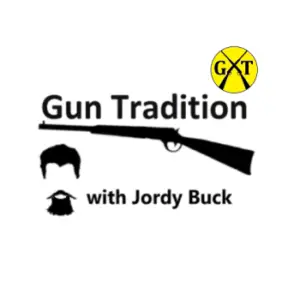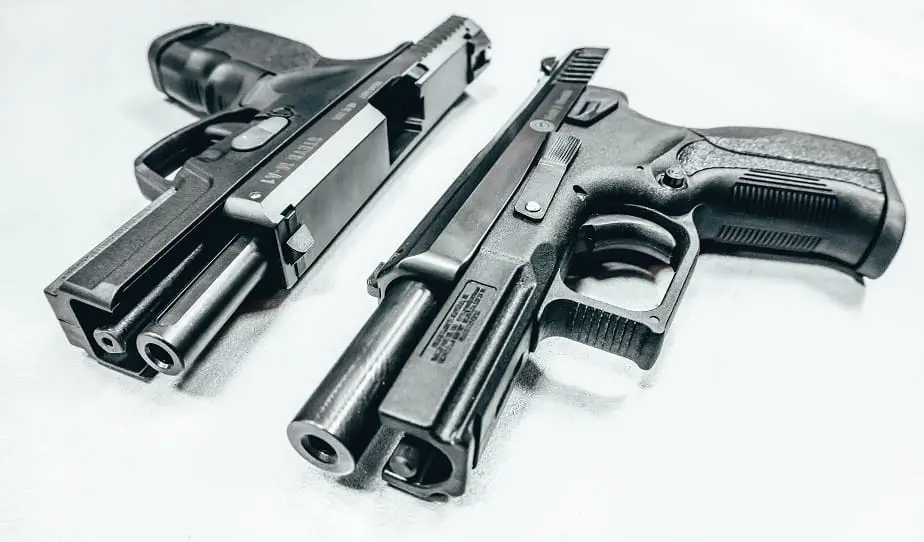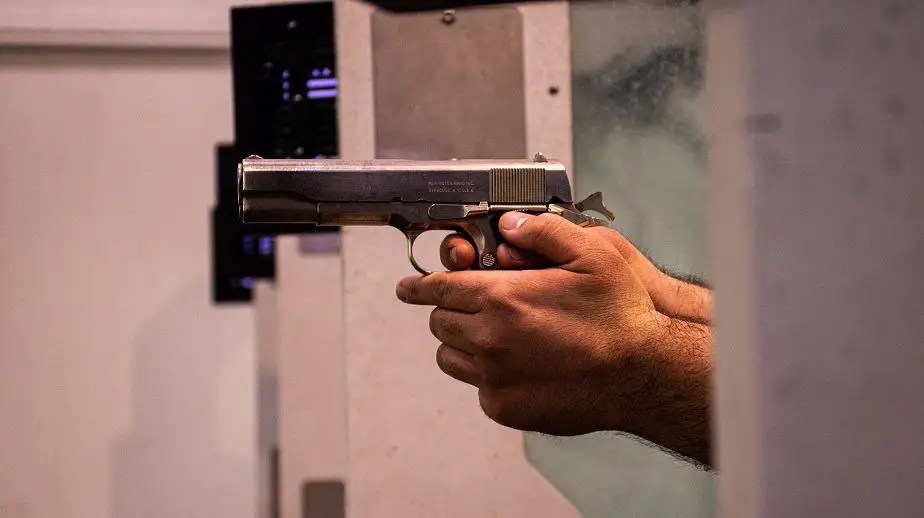
I’ve fired both, tested both, and carried both for defense against bears and humans. I’ve sifted through tons of half-truths and fallacies to give you the best information on the internet! Here’s everything you need to know.
| 45acp | 10mm | |
| Bullet diameter | .452 | .400 |
| Overall length | 1.275 inches | 1.260 inches |
| Max chamber pressure | 21,000 PSI | 37,500 PSI |
| Min weight | 120 gr. | 115 gr. |
| Max weight | 250 gr. | 230 gr. |
| Standard weight | 230 gr. | 180 gr. |
| Standard velocity | 850 fps | 1150 fps |
| Standard energy | 396 ft/lbs. | 529 ft/lbs. |
| Max energy | 540 ft/lbs. | 709 ft/lbs. |
| Average Hollow Point Penetration | 13 inches | 16.5 inches |
| Average HP expansion | .702, +55% | .670, +67% |
| FMJ penetration | 29 inches | 34 inches |
| Average recoil | 8 ft/lbs. | 9 ft/lbs. |
| Cost | FMJ $0.60/rd. HP $1.60/rd. | FMJ $0.70/rd. HP $1.50/rd. |
| Availability | Commonly available | Might not be carried locally |
The 10mm and 45acp both have specific strong points and weaknesses. Do you want to know more? let’s dive into ballistics and shooting data!
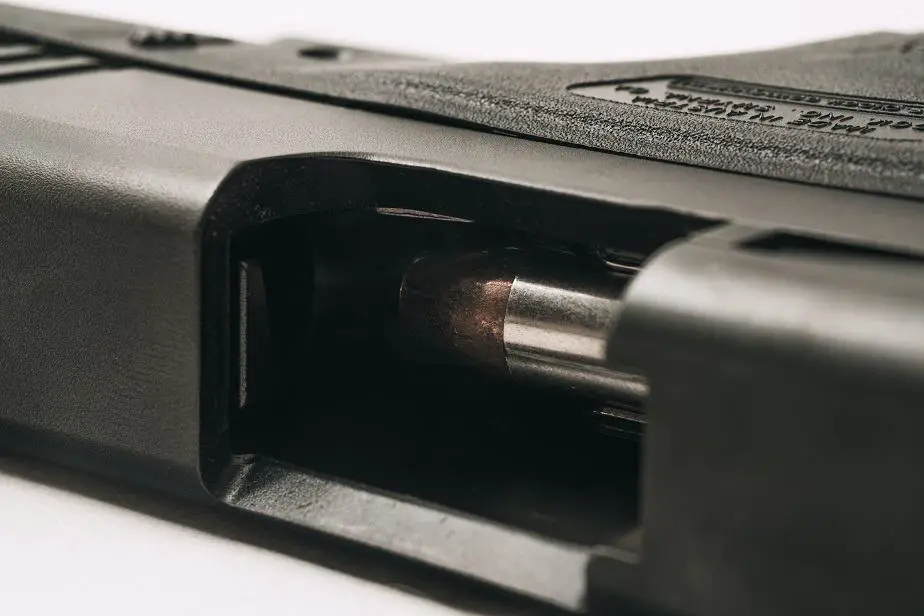
Is 10mm More Powerful Than 45acp?
The average 10mm load is 33-percent more powerful than the average 45acp. 10mm bullets achieve 20 percent more velocity than 45acp of similar weight. Max power 10mm loads can reach over 700 ft/lbs of energy in a 4-inch barrel pistol, while the most powerful 45acp reaches about 550 ft/lbs out of a 4-inch barrel.
What is power? In ballistics, a bullet’s energy is measured in foot-pounds, but that’s only part of the story. What we really want to know is how much damage will the bullet make. The hard part is, that depends on what exactly is being shot. Different targets react quite differently to the same bullet.
In the end, I settle on a combination of numbers and real-world experience. Let’s start with pressure limits. The max pressure of a cartridge is really what gives its limit. the max pressure of a 45acp is 21,000 PSI. That’s not really impressive. The 45 traditionally makes up for its low pressure by using a heavy bullet to increase energy.
The 10mm can be loaded up to 37,500 PSI chamber pressure. That’s a 78.5% increase over the 45, which is pretty insane. If I load a 45 to max pressure with a 200-grain bullet, I can push it about 1,050 FPS for an energy value of 490 ft/lbs. Now if I load a 10mm to max pressure with a 200-grain bullet, I can easily get it to 1,200 FPS and 639 ft/lbs.
When dealing with velocities this low, an increase of one or two hundred FPS is very significant because it greatly increases the bullet energy. That’s how the 10mm overpowers the 45acp. Here is a quick video from one of my favorite YouTube channels showing what I mean.
Energy is a funny thing. Mass times velocity equals force. There are three numbers there; mass, velocity, and force. We can up mass and/or velocity to gain force (energy), but the biggest factor in the equation is velocity. Because bullets have to fit in the guns, we can only go so far with the mass.
Once we hit the maximum pressure in a 45acp, the only way to gain energy is to use a lighter bullet, thereby increasing the velocity. That’s actually the best way to gain energy in a cartridge. Use lighter, faster bullets. Speed is the multiplier here. But lighter bullets don’t penetrate as well because they lack good sectional density.
Neither one does very good against body armor or other armored targets. The 10mm would do better, but still a basic Level 3A armor will stop it.
10mm vs. 45 Stopping Power
The 10mm will transfer more stopping energy than a 45acp into a target. Both the 10mm and 45acp will have similar incapacitation results on a humanoid target. The 10mm will stop larger animals faster than a 45acp because it has more energy and penetration, allowing for more devastating wounds.
By now it’s easy to see that the 10mm is a fairly potent little pistol round but the 45acp is no slouch either. The 45 was designed to replace the old 38 Smith and Wesson revolver round (no, not 38 special). The 45 shot a bullet 100 FPS faster and 70 grains heavier with near;y twice the energy. Those old guns were scary.
At the time, the 45acp was nearly the most powerful handgun made, wow how far we’ve come. The 45 was touted as a true man-killer and a capable hunting pistol for deer and black bear, and the only ammo was FMJ. Today’s hunters laugh at that notion.
The 45acp has been used and favored by US troops from before WWI to The War On Terror, literally over a hundred years. They like it a lot. It has a reputation of taking down combatants swiftly and surely. It’s certainly more powerful than the 9mm our armed forces are going towards.
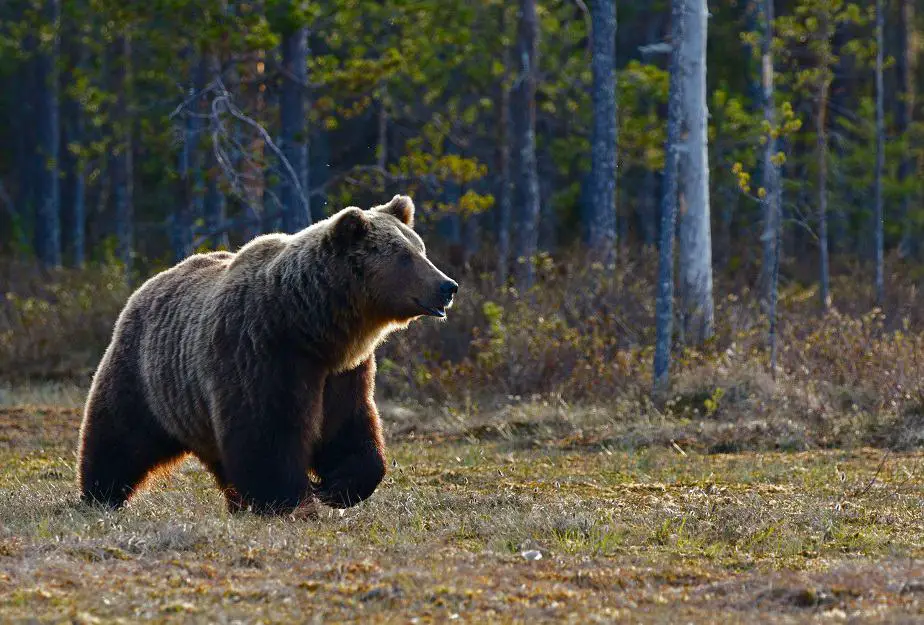
10mm vs 45 for Bear
The 10mm is a better bear gun than a 45acp, but people do use both. The 45acp often lacks penetration to reach the vitals or to penetrate the skull on a big bear. Greenland police are issued 10mm pistols with 200-grain bullets to combat problem polar bears. 10mm is significantly more effective on bears than 45acp.
The 45 is no bear slayer. Neither is the 10mm for that matter. The 10mm is the absolute minimum to be considered enough to fend off a bear attack. It has enough penetration to do the job with decent shot placement and is able to destroy enough damage to cause a bear to bleed out somewhat quickly.
I know a lot of guys carry a 45 in bear country, it’s is quite common in Alaska these days. That’s only because it’s what’s affordable and available to most. expanding ammo is preferred for self-defense and hunting, but a 45acp hollow point has nowhere enough penetration to reliably inflict fast-acting lethal damage on a 300-pound bear.
The best 10mm hollow points, Underwood or Buffalo Bore, generally penetrate to about 17 inches in ballistic gel, about 30 percent more. That’s a significant difference but still not a lot for bears. bears have thick fur, heavy hide, dense muscle, and large bones; all of which get in the way of penetration.
I wouldn’t hesitate to carry those hot hollow points in black bear country, but if you may encounter significantly larger bears, you’d be better off with a more powerful option. Now, there are bullet designs that will penetrate much more.
A 45acp FMJ will usually penetrate 18-24 inches in an animal, and tumble a bit so as to create a half-decent wound channel. They take about the same damage of a hollowpoint and stretch it out a bit with more penetration. It’s a poor choice for humanoid targets, but definitely better on larger animals.
Unlike most 45acp bullets, 10mm bullets are flat-nosed which ends up making them more stable, tumbling less. That means it will go deeper, but create a skinnier wound channel. With almost all pistols, tissue is only destroyed when it comes in contact with the bullet while the bullet is moving at fast enough speeds to tear flesh.
When a bullet tumbles, it contacts more tissue and makes a wider wound, but slows down from the increased drag. Flat nose bullets do that to a lesser degree and penetrate somewhat further. In my opinion, it’s a marginal difference really.
If you are going to carry a 45 for bears, I’d recommend loading it with Winchester Whitebox. It’s about the best bet, and very affordable. For the 10mm, I’d be inclined to carry a hotrod hollow point in the area of 180-200 grains. Underwood and Buffalo Bore have the best offerings for those.
Most bears are 300lbs. and under. A hot 180 grain 10mm hollow-point should be able to handle that. Now, in big bear country, aka Grizz territory, go big or go home. I’d want a 44 mag at minimum. For the record, If I get drawn for the bear hunt this year, I, planning on a pistol hunt with my 10mm Glock for black bears.
If you’d like to know more, I wrote an article on 10mm for bear defense. Here’s a link to it.
10mm Auto and 45acp Balitsics Gel Comparisions
Kentucky Ballistics has a great video on both calibers’ true performance in ballistics gelatin. If you have 9 minutes, It’s certainly worth the watch. I’ve watched it through several times. they did a good job.
Does 10mm Recoil More Than 45acp?
The 10mm has about 1 ft/lb. more recoil than the 45acp with standard range ammo, and 2 ft/lbs. more with full-power ammo. The 45acp ranges from 7-9 ft/lbs. of recoil, and the 10mm ranges 8-11 with common guns and ammunition. The recoil of the two is very similar with comparable pistols, but most shooters can feel the difference.
There is a very real difference in recoil between the 10mm and 45. It’s easy to feel, and experienced shooters can actually hear the difference. Still, the 10mm doesn’t have a scary or unbearable recoil. No, it isn’t going to hurt your wrist unless you already have severe wrist ailments.
I know the story of it was supposedly unmanageable for FBI agents and it was loaded less powerful, and eventually dropped altogether because of its “brutal nature”. it does take a bit more practice to manage it than a 9mm, but it’s much better if you can manage it. And it’s not that bad! I’m only 155 pounds and I manage it fine.
I like the words of Colin Noir on the topic. “It feels like your going up the first part of a rollercoaster, then you get there and nothing actually happens”. Yeah, the recoil isn’t that bad.
The 45 has a pleasant recoil, not at all harsh in a full-sized pistol. the low pressure and slow speed of the bullet really keep things quite tame. If you shoot both you’ll notice the 10mm is a little more poppy. Because it’s a higher pressure round, it has a higher recoil velocity. The recoil goes through the gun faster so you feel it a bit more sharply.
While I’m on the topic, the Glock 20 is the most popular 10mm pistol and it’s quite lightweight. The 1911 is the classic 45acp and it’s a very heavy gun. More weight means less recoil, less weight means more recoil.
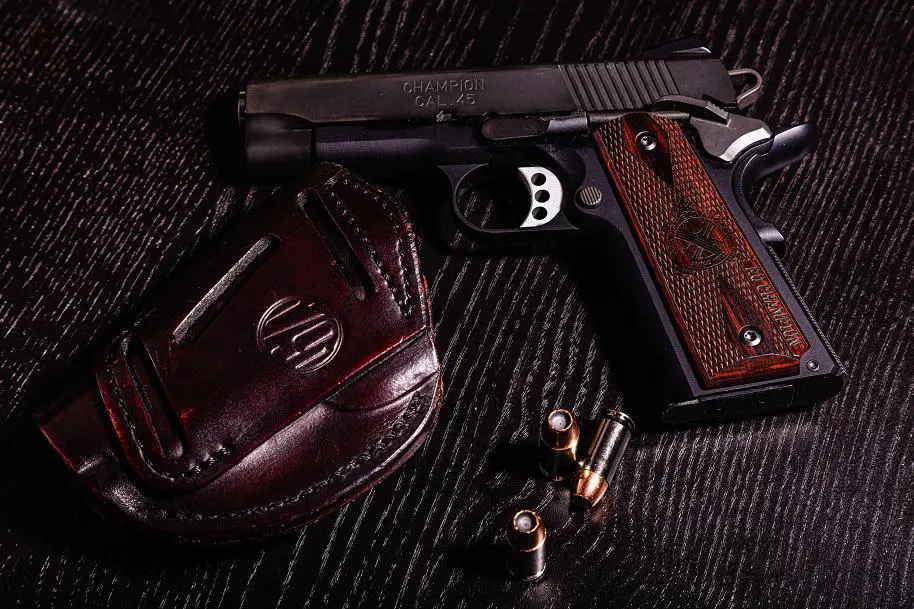
10mm or 45, Which is Better for Self-defense?
Both 10mm and 45acp are equally effective in the average self-defense shooting, according to crime data statistics. Getting hits on target is what matters most. There are some circumstances where the 10mm may be more effective in extreme cases where distance or penetration may limit the 45acp.
Both are great options to chose from. There are always downsides to everything though. The 45acp does certainly meet the FBI defensive ammunition standards, as does the 10mm. But the 45acp tends to come in near the bottom in terms of hollow-point penetration. Often, it only penetrates 13 inches when tested according to FBI standards.
That’s close to the minumim penetration you should get for defensive ammo (12 inches). On the flip side, there’s a maximum penetration too. penetration over 18 inches means that a bullet will likely pass through a body most of the time, often with energy to spare. That meant there are bullets flying around that can hurt innocent people.
10mm Auto hollow points, if they are loaded full power, tend to penetrate 16+ inches. That’s getting close to the maximum acceptable penetration for shooting a violent attacker without endangering others. on one hand, you’re close to not enough. On the other, you’re close to too much. Still, both are within the acceptable range.
Another interesting factor is distance. Some hollow points do not function well at distances beyond 20 yards. Many of them are loaded for a muzzle velocity that is about equal to the velocity needed for the bullet to initiate expansion. They work up close but not at any appreciable distance.
That’s not just a 45 thing, it’s just that some companies like to deliver you the minimum. there is no way to tell how far a shot you might need to make when the time comes, and when the time comes, you better be ready. You can avoid this by going with a faster-loaded bullet, or just checking on youtube for ballistic results of certain ammo.
For the record, I like Buffalo Bore and Underwood Ammo the best.
Which is Better for Hunting, 10mm or 45acp?
10mm is more capable than a 45acp as a hunting handgun caliber. The 10mm is faster, more stable, and more powerful. There are more commercially available hunting loads in 10mm than in 45acp. 10mm is the most capable of semi-automatic hunting pistols. With heavy bullets, it rivals the 357 magnum revolver for handgun hunting.
For handgun hunting, you can’t beat the 10mm auto without going to a magnum revolver cartridge. Do you want to hunt with a semi-auto handgun? If so you just about have to use a 10mm. Heavy 10mm hunting loads come in just a hair less powerful than the 357 magnum.
I’ve seen deer and hogs shot with the 45acp, but my experience is that it often doesn’t work out well. If you don’t have perfect shot placement and a good shot angle, it likely won’t work. The 10mm gives a good edge in hunting penetration, even at a bad shot angle.
